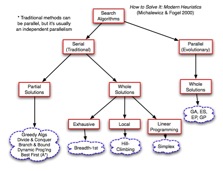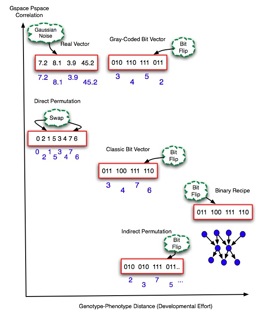Subsymbolic Artificial Intelligence (SSAI)
This course has two id’s: IT3708 at NTNU in Trondheim, Norway, and DTAD-20 at the University of Ostersund in Sweden. It introduces several artificial intelligence methods that involve more quantitative calculation than symbol manipulation. Two key subsymbolic methodologies are covered in detail: evolutionary algorithms (EA) and artificial neural networks (ANN), both of which are derived from biological principles.
EAs use the evolutionary biological metaphor of Darwinian natural selection as the basis for stochastic parallel search through complex fitness landscapes. This powerful search technique has been applied to a host of problem domains, such as task-scheduling, controller design, pattern recognition, robotics, immunology, economics and machine learning. In addition, EAs are commonly used in artificial life (alife), an exciting new interdisciplinary area with strong connections to biology, chemistry, mathematics, computer science and engineering. We will focus on two types of EAs: genetic algorithms (GA) and genetic programming (GP).
Neural networks are powerful machine-learning tools abstractly based on the behaviors of collections of neurons in the brain. They are exceptionally useful in learning general concepts from examples, in either a supervised mode (i.e. the system is told which class each example belongs to) or unsupervised situations, where the ANN has to cluster the examples based on similarity. The distributed nature of information in neural networks makes them fundamentally different from standard AI knowledge representations and very popular as models of memory and as tools for complex data-analysis tasks in a wide variety of domains.


The end




